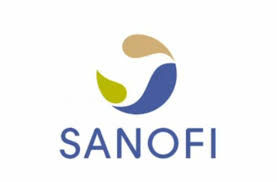预约演示
更新于:2025-05-07
ADRA1 x VDCCs
更新于:2025-05-07
关联
10
项与 ADRA1 x VDCCs 相关的药物作用机制 ADRA1拮抗剂 [+3] |
原研机构 |
非在研适应症 |
最高研发阶段批准上市 |
首次获批国家/地区 美国 |
首次获批日期2009-07-01 |
作用机制 ADRA1拮抗剂 [+3] |
非在研适应症- |
最高研发阶段批准上市 |
首次获批国家/地区 日本 |
首次获批日期1995-03-31 |
作用机制 ADRA1激动剂 [+3] |
在研适应症 |
非在研适应症- |
最高研发阶段批准上市 |
首次获批国家/地区 美国 |
首次获批日期1965-11-18 |
54
项与 ADRA1 x VDCCs 相关的临床试验CTR20242456
盐酸决奈达隆片(400mg)在中国健康受试者中空腹和餐后给药条件下随机、开放、单剂量、交叉生物等效性试验
主要研究目的:按有关生物等效性试验的规定,选择Sanofi Aventis U.S., LLC为持证商的盐酸决奈达隆片(商品名:迈达龙®,规格:400mg)为参比制剂,对安徽艾立德制药有限公司生产、江苏艾立康医药科技有限公司提供的受试制剂盐酸决奈达隆片(规格:400mg)进行空腹和餐后给药人体生物等效性试验,比较受试制剂中药物的吸收速度和吸收程度与参比制剂的差异是否在可接受的范围内,比较两种制剂在空腹和餐后给药条件下的生物等效性。
次要研究目的:观察健康受试者口服受试制剂盐酸决奈达隆片(规格:400mg)和参比制剂盐酸决奈达隆片(商品名:迈达龙®,规格:400mg)的安全性。
开始日期2024-08-09 |
申办/合作机构 |
CTR20233185
盐酸决奈达隆片(400mg)在中国健康受试者中餐后给药条件下随机、开放、单剂量、两序列、两周期、双交叉生物等效性试验
主要研究目的:按有关生物等效性试验的规定,选择Sanofi Aventis U.S.,LLC为持证商的盐酸决奈达隆片(商品名:迈达龙,规格:400mg)为参比制剂,对石家庄四药有限公司生产的受试制剂盐酸决奈达隆片(规格:400mg)进行餐后给药人体生物等效性试验,比较受试制剂中药物的吸收速度和吸收程度与参比制剂的差异是否在可接受的范围内,评价两种制剂在餐后给药条件下的生物等效性。次要研究目的:观察健康志愿受试者口服受试制剂盐酸决奈达隆片(规格:400mg)和参比制剂盐酸决奈达隆片(商品名:迈达龙,规格:400mg)的安全性。
开始日期2023-11-19 |
申办/合作机构 |
CTR20233468
盐酸决奈达隆片的人体生物等效性研究
研究空腹/餐后状态下单次口服受试制剂盐酸决奈达隆片与参比制剂盐酸决奈达隆片(迈达龙®)在健康成年男性受试者体内的药代动力学,评价空腹/餐后状态下口服两种制剂的生物等效性和安全性。
开始日期2023-10-25 |
申办/合作机构 |
100 项与 ADRA1 x VDCCs 相关的临床结果
登录后查看更多信息
100 项与 ADRA1 x VDCCs 相关的转化医学
登录后查看更多信息
0 项与 ADRA1 x VDCCs 相关的专利(医药)
登录后查看更多信息
38
项与 ADRA1 x VDCCs 相关的文献(医药)2025-02-01·American Journal of Hematology
Blood Plasma Methylated DNA Markers in the Detection of Lymphoma: Discovery, Validation, and Clinical Pilot
Article
作者: Katerov, Slava ; Graham, Rondell P. ; Novak, Anne J. ; Jevremovic, Dragan ; Burger, Kelli N. ; Berger, Calise K. ; Mahoney, Douglas W. ; O'Connell, Maria C. ; Taylor, William R. ; Cerhan, James R. ; Witzig, Thomas E. ; Dao, Linda N. ; Doering, Karen A. ; Allawi, Hatim T. ; Kisiel, John B. ; Bamlet, William R. ; Hennek, Jacquelyn ; Foote, Patrick H. ; Devens, Mary E. ; Arndt, Jacquelyn R.
2023-10-01·Journal of traditional Chinese medicine = Chung i tsa chih ying wen pan
Mechanism of Lingbao Huxin Dan in the treatment of bradyarrhythmia complicated with coronary heart disease: a network pharmacology analysis.
Article
作者: Huagang, Han ; Tianquan, Wang ; Junling, Cao ; Lingyan, Dong ; Ziqiang, L I ; Jingfeng, Ouyang
2023-04-01·Poultry Science
Serum bone remodeling parameters and transcriptome profiling reveal abnormal bone metabolism associated with keel bone fractures in laying hens
Article
作者: Wei, Haidong ; Li, Jianhong ; Wang, Yulai ; Bao, Jun ; Bi, Yanju ; Zhang, Runxiang ; Zhao, Qian
1
项与 ADRA1 x VDCCs 相关的新闻(医药)2025-04-02
Hanmi Pharm Begins Local Sales of Urological Product 'Aditams' in Mexico with Partner 'Laboratorios Silanes'
Launch completed in February, Hanmi Pharm's Third Product to Enter Latin America
Aditams, The First Urological Combination Drug for OPG and ED Exported to Mexico
SEOUL, South Korea, April 2, 2025 /PRNewswire/ -- Hanmi Pharmaceutical's combination therapy for Obstructive Prostatic Growth (OPG) caused by Benign Prostatic Hyperplasia (BPH) and Erectile Dysfunction (ED), Gugutams, is entering the Mexican market under the local brand name "Aditams."
Continue Reading
Aditams
Hanmi Pharmaceutical announced that it has completed the launch of Aditams in Mexico under the export agreement signed in October 2020 with the Mexican pharmaceutical company 'Laboratorios Silanes'. Under the agreement, Hanmi Pharmaceutical plans to export Gugutams to the Mexican market for a period of seven years, starting in February 2025.
Gugutams, developed by Hanmi Pharmaceutical, is the world's first urological combination therapy combining two active ingredients: tamsulosin, a treatment for Obstructive Prostatic Growth (OPG), and tadalafil, a treatment for erectile dysfunction (ED). It is also noteworthy as the first prescription drug in Korea to apply Poly-Cap technology, which integrates multiple active ingredients into a single capsule.
Laboratorios Silanes, a leading pharmaceutical company in Mexico founded in 1943, is committed to providing innovative healthcare solutions and driving rapid growth in the industry. It has established itself as a key player in the Latin American pharmaceutical market through its robust distribution network and strategic collaborations with global partners.
Silanes previously collaborated with Hanmi Pharmaceutical in 2023 to successfully introduce the hypertension and dyslipidemia combination treatment 'Amosartan Q', under the local brand 'Lodarta' and in 2024 to introduce the combination hypertension treatment 'Amosartan Plus' under the local brand 'Bicartial-CTD'. Following these products, Gugutams, under the local brand 'Aditams', becomes Hanmi Pharmaceutical's third product in the Latin American region.
Aditams, as the first urological combination therapy to enter the Mexican market, is expected to offer a new treatment option for patients suffering from both Obstructive Prostatic Growth (OPG) and erectile dysfunction (ED). By managing both conditions with a single medication, it significantly enhances patient convenience and maximizes therapeutic efficacy.
Hanmi continues to focus on expanding its partnerships in emerging markets such as the Middle East and Latin America, in addition to its established presence in developed markets like North America and Japan. The company aims to leverage strategic partners like Laboratorios Silanes as key footholds to broaden its product portfolio and regional reach.
Park Jae-hyun, CEO of Hanmi Pharmaceutical, stated, "As the first urological combination therapy to enter the Mexican market, Gugutams is expected to present a new treatment paradigm for local patients." He added, "Through this collaboration with Laboratorios Silanes, we aim to solidify Hanmi Pharmaceutical's presence in the Latin American market and leverage this as a foundation to further strengthen our competitiveness in the global pharmaceutical industry."
Official Websites:
About Hanmi Pharmaceutical:
Hanmi Pharmaceutical is an R&D-focused pharmaceutical company committed to developing globally innovative therapies in areas of high unmet medical needs such as obesity/metabolism, oncology, and rare diseases. Hanmi leverages proprietary platform technologies, including long-acting biologics and bispecific antibodies, to address unmet medical needs. The company emphasizes open innovation and has established numerous global partnerships to advance its research and development efforts.
SOURCE Hanmi Pharmaceutical
WANT YOUR COMPANY'S NEWS FEATURED ON PRNEWSWIRE.COM?
440k+
Newsrooms &
Influencers
9k+
Digital Media
Outlets
270k+
Journalists
Opted In
GET STARTED
上市批准引进/卖出生物类似药
分析
对领域进行一次全面的分析。
登录
或

Eureka LS:
全新生物医药AI Agent 覆盖科研全链路,让突破性发现快人一步
立即开始免费试用!
智慧芽新药情报库是智慧芽专为生命科学人士构建的基于AI的创新药情报平台,助您全方位提升您的研发与决策效率。
立即开始数据试用!
智慧芽新药库数据也通过智慧芽数据服务平台,以API或者数据包形式对外开放,助您更加充分利用智慧芽新药情报信息。
生物序列数据库
生物药研发创新
免费使用
化学结构数据库
小分子化药研发创新
免费使用





